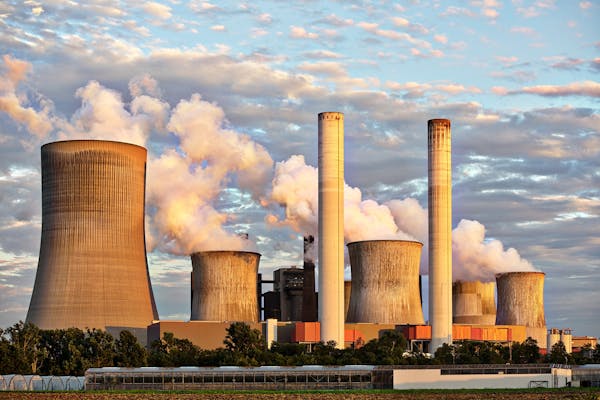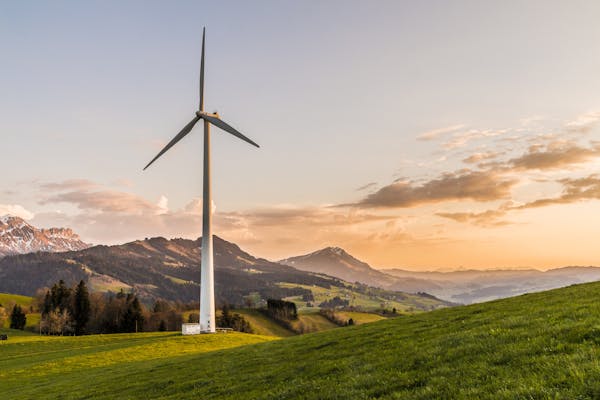The State of the Environment: Challenges and Solutions for a Sustainable Future
The environment is the foundation of all life on Earth, encompassing everything from the air we breathe to the oceans, forests, and wildlife that sustain our ecosystems. However, human activities have significantly impacted the planet, leading to widespread environmental degradation. Climate change, deforestation, pollution, and biodiversity loss are among the most pressing challenges of our time. In this article, we will explore the current state of the environment, the threats it faces, and the steps we can take to protect it.

The State of the Environment
The health of the environment is deteriorating at an alarming rate. As populations grow and economies expand, the demand for natural resources continues to rise, often outpacing the Earth’s capacity to regenerate them. This imbalance has led to several critical environmental issues, which are interconnected and have far-reaching consequences.
- Climate Change
Climate change is perhaps the most urgent environmental issue. Driven primarily by the burning of fossil fuels, deforestation, and industrial processes, climate change has resulted in rising global temperatures, melting ice caps, and increasingly extreme weather events. According to the Intergovernmental Panel on Climate Change (IPCC), the planet has already warmed by approximately 1.1°C since pre-industrial times. Without immediate action, global temperatures could rise by more than 2°C, triggering catastrophic effects such as sea-level rise, food and water shortages, and widespread displacement of populations. - Deforestation
Forests play a crucial role in regulating the Earth’s climate by absorbing carbon dioxide and releasing oxygen. However, deforestation—primarily driven by agriculture, logging, and urban development—is destroying vast areas of forests, particularly in the Amazon, Southeast Asia, and Africa. Deforestation not only contributes to climate change but also leads to soil erosion, loss of biodiversity, and disruption of water cycles. It is estimated that we lose approximately 10 million hectares of forest annually, further exacerbating environmental degradation. - Pollution
Pollution is a pervasive environmental issue that affects air, water, and soil quality. Industrial activities, vehicle emissions, agricultural runoff, and improper waste disposal contribute to the contamination of ecosystems. Air pollution, primarily caused by the burning of fossil fuels, leads to respiratory and cardiovascular diseases and is responsible for millions of premature deaths worldwide. Water pollution, including plastic waste, oil spills, and chemical runoff, harms marine life and ecosystems, while soil pollution degrades land and reduces agricultural productivity. - Biodiversity Loss
The Earth’s biodiversity is under severe threat, with species extinction rates now estimated to be 1,000 times higher than the natural background rate. Habitat destruction, pollution, climate change, and overexploitation of resources are driving the loss of species at an unprecedented rate. The decline in biodiversity not only threatens the survival of individual species but also undermines the stability of ecosystems and the services they provide, such as pollination, water filtration, and climate regulation. - Waste Management
The world is facing a mounting waste crisis, particularly with regard to plastic. Every year, millions of tons of plastic waste enter the oceans, endangering marine life and contaminating food chains. Additionally, improper disposal of electronic waste (e-waste), hazardous chemicals, and non-biodegradable materials exacerbates pollution and poses long-term environmental and health risks.

The Path to Environmental Sustainability
While the challenges facing the environment are daunting, there are numerous strategies and initiatives aimed at addressing these issues and promoting a more sustainable future.
- Transition to Renewable Energy
One of the most effective ways to combat climate change is to transition away from fossil fuels and embrace renewable energy sources such as solar, wind, and hydropower. Renewable energy technologies are becoming more affordable and accessible, and many countries are investing in large-scale renewable energy projects. By reducing reliance on coal, oil, and natural gas, we can significantly lower greenhouse gas emissions and slow the pace of global warming. - Conservation and Reforestation
Protecting existing forests and restoring degraded landscapes are key to combating deforestation and preserving biodiversity. Reforestation efforts, such as planting trees and restoring ecosystems, can help sequester carbon, improve air and water quality, and provide habitats for wildlife. Conservation initiatives, including the creation of protected areas and wildlife corridors, are also essential to safeguarding biodiversity and maintaining ecosystem balance. - Sustainable Agriculture
Agricultural practices contribute significantly to deforestation, water pollution, and greenhouse gas emissions. To mitigate these impacts, there is a growing movement toward sustainable agriculture, which focuses on reducing chemical inputs, conserving water, and promoting biodiversity. Techniques such as agroforestry, organic farming, and crop rotation can enhance soil health, reduce environmental degradation, and increase resilience to climate change. - Reducing Pollution
Tackling pollution requires a multi-faceted approach, including stricter regulations on industrial emissions, improving waste management systems, and reducing single-use plastics. Governments, businesses, and individuals all play a role in minimizing pollution. For example, transitioning to electric vehicles and using public transportation can reduce air pollution, while adopting circular economy principles can decrease waste and promote recycling. - Protecting Marine Ecosystems
Oceans are critical to the Earth’s environmental health, but they are under constant threat from pollution, overfishing, and climate change. Protecting marine ecosystems requires international cooperation and the establishment of marine protected areas (MPAs), which help conserve biodiversity and support sustainable fisheries. Reducing plastic pollution through bans on single-use plastics and increasing recycling efforts are also crucial to protecting marine life and ecosystems. - Climate Change Adaptation
While efforts to mitigate climate change are essential, we must also prepare for the impacts that are already unavoidable. Climate change adaptation involves developing strategies to cope with rising temperatures, extreme weather events, and other climate-related challenges. This includes building resilient infrastructure, improving water management, and protecting vulnerable communities.

Individual Action and Environmental Advocacy
While governments and corporations have a significant responsibility in addressing environmental issues, individual actions can also make a difference. Simple steps such as reducing energy consumption, minimizing waste, using reusable products, and supporting sustainable businesses can contribute to environmental sustainability. Additionally, individuals can advocate for stronger environmental policies by supporting green initiatives and holding governments and companies accountable for their environmental impact.
Conclusion
The state of the environment is at a critical juncture. The challenges we face—from climate change to pollution and biodiversity loss—are immense, but they are not insurmountable. By embracing sustainable practices, advancing technology, and fostering global cooperation, we can protect the planet and ensure a livable future for generations to come. The time to act is now, and everyone has a role to play in safeguarding the environment.


